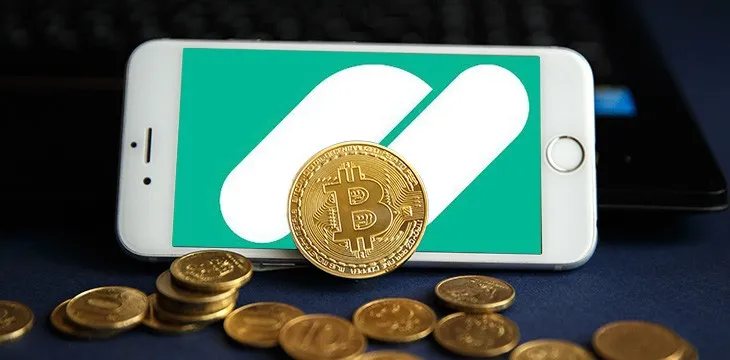|
Getting your Trinity Audio player ready...
|
The Laxo Wallet is now available for both Mac and PC. On January 20, Laxo, a Bitcoin SV (BSV) wallet provider, released its first version of its threshold signature wallet.
Laxo wallet is out for mac, got rid of mnemonic and complicated stuff, you will be able to create multiparty wallets on next release, we are sunsetting p2sh ahead of genesis, join our telegram group for help:https://t.co/A5SCXmtLv2 pic.twitter.com/OSFdXSdrq1
— Volt.id (@VoltWallet) January 21, 2020
The Laxo Wallet is BSV’s first multi-signature wallet that support threshold signatures. A threshold multi-sig wallet is a cryptocurrency wallet that splits one private key into multiple parts. Each member of the threshold multi-sig wallet receives a piece of that one key, and when N out of M (for instance, 2 of 3) users provide their fraction of that private key for a transaction, the transaction is approved and sent.
In other words, Threshold multi-sig distributes key generation, key storage, and signing across multiple parties. This removes the chance of there being a single point of failure and leads to better security overall since a private key can never be compromised in its entirety–unless N of M private key slices are compromised.
Optimizing the user experience
Laxo is looking to make cryptocurrency wallets easier to use than ever before. To accomplish this goal, they have started by removing the 12-word mnemonic from their wallet generation process.
“Mnemonics controlling a wallet makes it very easy to lose all the funds associated with the wallet. People forget their mnemonics easily,” said Wang Fu Qiang, the founder of Laxo Solutions.
The 12-seed mnemonic is an inconvenient way to safeguard your funds and has even led to many people losing access to their funds.
I just lost all the #Bitcoin I have ever owned. My wallet got corrupted somehow and my password is no longer valid. So now not only is my Bitcoin intrinsically worthless; it has no market value either. I knew owning Bitcoin was a bad idea, I just never realized it was this bad! pic.twitter.com/6SJvDJOZU6
— Peter Schiff (@PeterSchiff) January 19, 2020
Many wallets urge their users to write their mnemonic down and keep it in a safe place, but that mnemonic can easily be lost. Others try to memorize it, but it can be easy to forget 12 words and the sequence they come in.
Unfortunately, once you forget your mnemonic, you will not be able to access your funds any longer. This is why Laxo does not use a 12-word mnemonic. Instead, it relies on the security within threshold signature technology for the solution.
“With the Laxo Wallet, if a user loses access to their device or backup, he/she can initiate a recovery process by requesting services that store other key parts to recalculate and generate a new set of key parts,” said Wang Fu Qiang.
On Laxo, the default personal wallet comes with a 2/3 signature scheme. This means there are a total of 3 key slices—one is stored on the user’s device, and the other two are stored with Laxo and Maxthon, respectively. That being said, even if any one piece is lost, user funds are still secure because two out of the 3 keys will always be intact and can be used to generate a new private key slice for the user who has lost their slice.
What’s next for Laxo
Laxo plans to roll out iPhone and Android support for the Laxo Wallet in the next few months. Once the mobile versions of the Laxo wallet are released, users will be able to recover their funds via face id and fingerprint.
Laxo will also be adding features like fixed deposit, asset inheritance, and more as they continually update their wallet. In the next update, Users will be able to create multi-party wallets; wallets in which they can set the parameters when it comes to how many parties need to provide their key slice, and they will have the ability to add—or remove—members to the wallet.
You can download the Laxo Wallet by heading over to the Laxo website. To receive the latest updates about the Laxo Wallet, or to provide the team with feedback, you can join the Laxo Wallet Telegram group to receive updates in real-time or to ask any questions you might have.

 06-30-2025
06-30-2025 





